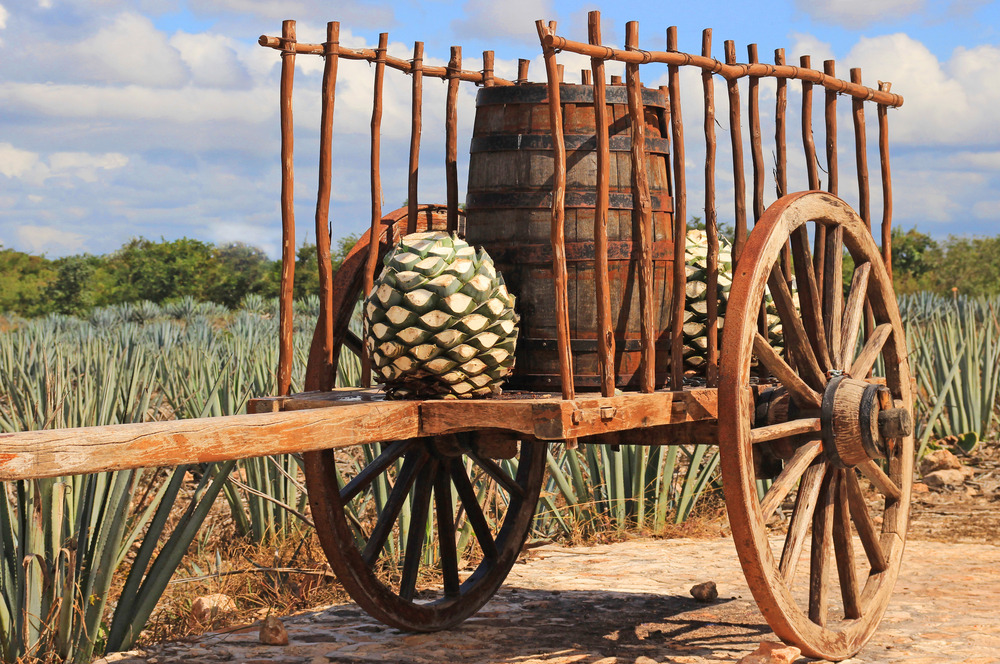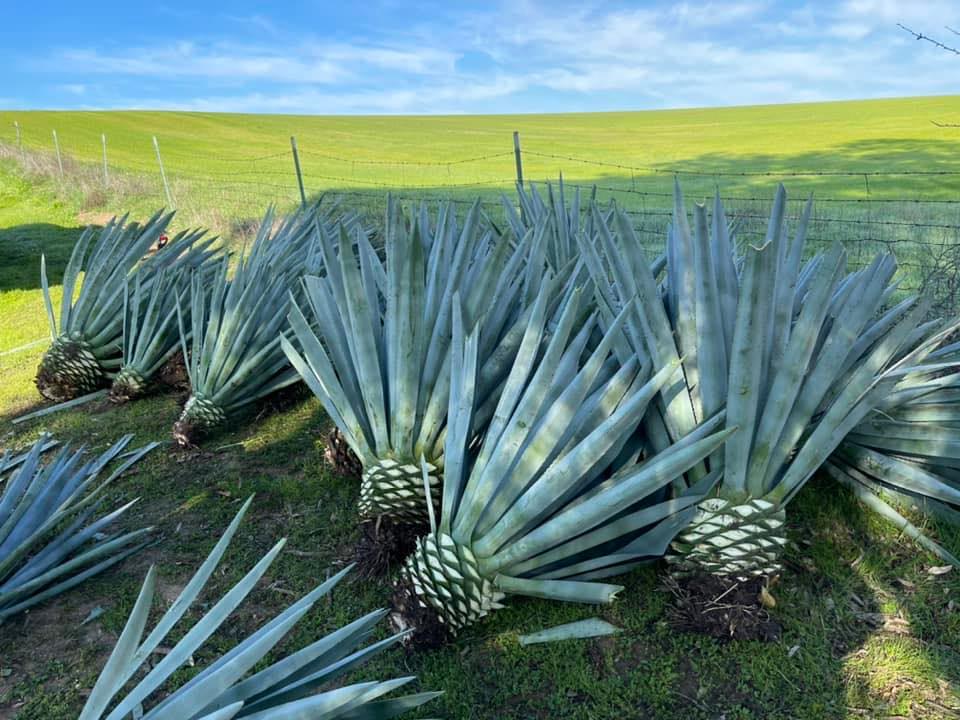For non-Californians, the Golden State is often associated with things like surfing, palm-tree-lined beaches, rows of lush vineyards, and romantically foggy Golden Gate cityscapes. But for those in the Central Valley, the dusty desert landscape is much more familiar. Long, hot, dry summers and farmland as far as the eye can see are common experiences for more than 6 million Californians. Many consider the Central Valley to be the breadbasket of the world, where expert farmers farm thousands of crops like citrus, grapes, figs, tomatoes and nuts on a commercial level. Unfortunately, climate change and drought have hit California hard in the last several years, and after constant battles over limited water use and frustrations over other political regulations, California farmers have had to shift gears and get creative.

When you think of tequila and mezcal, of course Mexico comes to mind. You might imagine a hot summer sun beating down on a desert landscape peppered with fields of agave in the gorgeous highlands of Jalisco. In this environment, agave — the mother of tequila and mezcal — thrives, generously providing us with her sweet gift of delicious spirits. The beloved tequila plant has been known exclusively as a Mexican treasure — until now.
Central Valley farmers, after being forced to uproot thousands of acres’ worth of dry and dying crops due to the California water shortage, had a revelation. Realizing that tequila and mezcal are the fastest-growing spirits in the United States, California farm owners have taken their cue from Mexico’s experts and started planting their own drought-resistant agave. The plan is to create a whole new, never-before-tasted, unique-to-California agave spirit.
Stuart Woolf, president and CEO of Woolf Farming, sat down for an exclusive interview with The Manual to share his thoughts and plans about this exciting possibility. Woolf grows everything from almonds and wine grapes to pistachios and tomatoes, selling his top-notch crops to enormous companies like Heinz. However, it’s his field of 4,000 experimental agave plants that has him most excited at the moment.
“It’s fun to be part of a fledging industry,” Woolf told us. “Friends and family I’ve known for years who’ve never otherwise shown any interest in agriculture are suddenly interested in what I do and even wanting to invest!”

With California droughts ongoing and agave’s limited need for water, Woolf’s excitement makes sense. Not only is the idea of a brand new spirit exciting, but the difference in agave’s water needs compared to the needs of other crops is astonishing. Annually, almonds require between 48 and 55 inches of rain to thrive. Pistachios need between 36 and 40 inches of rain. Tomatoes need up to 78 inches of rain per year. Agave? Only about two inches of rain annually. The difference is shocking and gives real hope to California farmers who’ve been pummeled by drought.
Woolf is in the experimental phase of this project, currently testing 12 varieties of agave plant on his land. Different soil types, fertilizers, and watering levels are all being researched and documented with much success. Because irrigation systems are already in place, much of the land here can be watered more routinely than Mexico’s farms, which often lack any sort of watering system and rely fully on rainfall. The hope is that by watering California plants more consistently and regularly, the agave will grow bigger and with more sugar than their Mexican counterparts. Ultimately, this would create a bolder, even more flavorful spirit than anything we’ve yet seen.
The excitement of this burgeoning project has even reached the state capital. With the help of California Assemblyman Jim Patterson, Woolf was able to form the California Agave Council, a group of passionate growers, distillers, retailers, and consumers aiming to promote and build the emerging California agave spirits industry.
Assemblyman Patterson spoke with us as well, saying, “I love the idea of tackling a problem so severe and detrimental to our farmers, and being able to create from it something so fruitful. Drought has caused such despair here in the Valley, and this is a beautifully creative and exciting way to turn that all around.”

Because of legal restrictions under Mexican law, this original spirit will not be able to be called “tequila” or “mezcal,” even though it will taste very similar. When we asked Woolf what we can expect the label to say, he said that names like “California distilled spirit” and “California agave spirit” are still being workshopped. Then he joked, “Who knows? Maybe even ‘Teqcali!'” The jury’s still out on that one, but we happen to love it.
“I love knowing that my children are seeing us tackle the drought crisis head on,” Woolf said. “Not only that, but giving it a positive spin on it for our lives, our business, and our future.”



